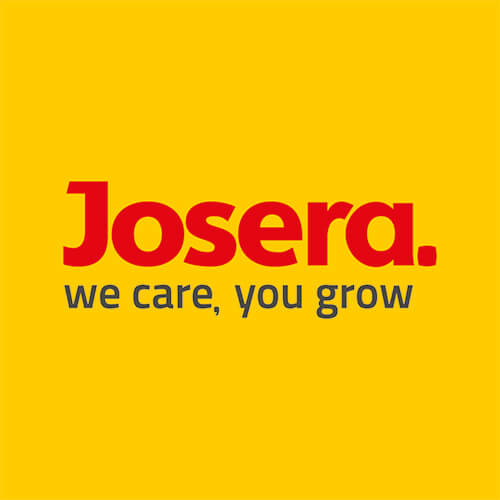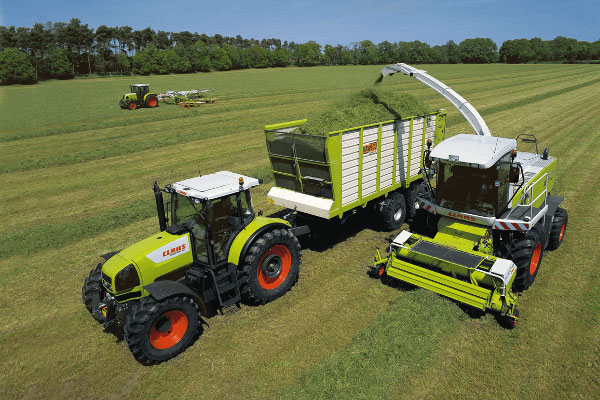Contents
- Determining harvesting time
- What happens if we harvest too early?
- What happens if we harvest too late?
- Cutting height and chop size
- Ideal packing density
- Inoculants usage
- Understanding silage inoculants
- Inoculants can improve milk production
- Optimal corn silage values
- What are the benefits of using silage inoculants?
- How do silage inoculants impact milk and beef production?
- Storage
- Bibliographic sources
Determining harvesting time
First, it is necessary to know the growth stage of the corn in the field to be able to determine the optimum corn silage maturity at harvest. The maturity will depend on the planting date (based on the variety) and the climate; the plant dry matter (DM) content can vary up to 0.5% depending on the climate. Thus, the correct harvesting time changes every year. Our goal is to achieve a dry matter content in the whole plant of 30-35% and regarding the corn cob, a dry matter content of 50-60%.
Grain maturity can be observed through the kernel milkline, which separates the liquid part from the solid part. The solid part should represent 1/2 or 2/3 of it to be optimum for silage. The dry matter of the grain at this stage is 63-64%.
However, due to the different maturity processes and plant maturity processes, these criteria can only be used as a guide in timing the optimal corn plant harvest. The dry matter content of the plant (without cob) should not exceed 24%. This ensures that there is not too much indigestible fiber that can decrease the digestibility of the silage. The result will be in a dry matter content in the whole plant of 30-35%.
Harvesting at the recommended stage of grain maturity brings several advantages: good packing density, adequate substances for fermentation (starch, sugar) which results in rapid lactic-acid fermentation, leading to a palatable and energy-rich corn silage. In general, a practical way is to consider a reduction of 0.5% moisture for each day. This is very useful when monitoring corn crops to plan the optimal harvest time.
Cutting height and chop size
Regarding the cutting height of the plant, it is recommended between 10 to 20 cm to obtain good nutritional results. If sufficient corn is to be left in the field, it makes sense to consider moving to a higher cutting height. High cutting has a higher ratio of grain to stover: by lowering the proportion of stalks in the silage, you raise the energy content.
When it comes to the chop length, theoretical chop size is 5 to 8 mm. This will depend on the maturity level of the plant: the higher the dry matter content, the shorter the chopping size should be to ensure good packing. However, very short chop lengths could negatively impact the corn silage structure.
The correct cracker setting, for optimum kernel processing, must be checked since only corn kernels that have been crushed can be digested by the cow. In general, more than 90% of the kernels must be crushed.

Ideal packing density
Ensuring high forage density is the most important part in silage making. Here it is essential that the tractor carrying out the packing (and not the driver who unloads the harvested material) determines the silo filling speed.
A density of more than 250 kg DM per cubic meter of silage is used as a guideline. This can be achieved with a maximum compaction layer height of about 20 to 30 cm. The tractor weight should be approximately one third of the unloading silage capacity per hour. For optimum cutting output, it is often useful to use two tractors or to fill two silos at the same time.
Inoculants usage
Decreasing dry matter content of silage can lead to excess moisture and low sugar thus delaying the ensiling process. This also results in a loss of nutrients through effluents.
Josilac® combi helps in these situations by accelerating the pH drop process, reducing nutrients loss and the spread of harmful microorganisms. At the same time, the homofermentative bacteria ensure good silage stability.
If the dry matter content is above the target value, the risk of reheating increases, especially due to poor packing. This also results in energy loss, as well reduced palatability, and digestibility. In this case, the usage of Josilac® ferm prevents yeast and fungal development, stabilizing the silage.
Understanding silage inoculants
Harvested corn naturally contains microorganisms, both beneficial and harmful for optimal ensiling. Among the beneficial microorganisms, we find lactic acid bacteria and within the undesirable microorganisms we have clostridia, enterobacteria, bacilli, yeasts and fungi.
Inoculants for corn silage contain live bacteria and should be incorporated into fresh forage prior to ensiling. They are primarily used to ensure fast and efficient fermentation and, it also inhibit aerobic spoilage.
Inoculants can improve milk production!
Silage that has been treated with inoculants can produce up to 8% more rumen microorganisms than untreated silage. This increase in the rumen flora improves nitrogen utilization, as the rumen microorganisms are a great source of protein for the animal.
In addition, researches have shown that treated silages produce less gas than untreated silages, without affecting digestibility nor production of volatile fatty acids.
| Category | Target Values |
|---|---|
| Whole plant dry matter content | 30 – 35%. |
| Crude Protein | 7% DM |
| Crude Fiber | 170 – 200 g/kg |
| Net Energy Lactation | >6 MJ NEL/kg DM |
| Starch | 35 – 40% DM |
| Neutral Detergent Fiber | 35 – 40% DM |
| Non Protein Nitrogen | <5% DM |
| Lactic Acid | 3-7% DM |
| Acetic Acid | <2% DM |
| Butyric Acid | <0.1% DM |
| Propionic Acid | <1% DM |
| pH | 3,8 – 4,5 |

According to scientific literature, we can expect 2.5% improvement in the DM content with homofermentative bacteria, this means 25 tons savings when treating 1000 tons of silage.
What are the benefits of using silage inoculates?
- Higher feed value – Silage inoculants allow the forage to reach pH levels where protein-consuming bacteria are rapidly inhibited. This results in improved protein retention in silage, mainly in high-protein forages.
- Better consumption – Inoculants limit the production of non-palatable elements, such as biogenic amines.
- Spoilage prevention – Butyric and Listeria spores are sensitive to low pH. A rapid acidification reduces the chances of these microorganisms to develop.
- Reduced losses – Inoculants such as Josilac® combi, containing homo- and heterofermentative lactic acid, accelerates the acidification process in silage, reducing losses in dry matter content. This generates antifungal properties that reduce losses caused by yeasts and fungi, as well as from heating of the exposed face of the silo once opened. Reheating prevention is possible thanks to the action of Lentilactobacillus buchneri (heterofermentative).
How do silage inoculants impact milk and beef production?
The return on investment can be measured in two ways. First, the dry matter content in the silo. According to scientific literature, there is 2.5% improvement in dry matter content when homofermentative inoculants are used, which means 25 tons in 1.000 tons of ensiled material. The second important aspect is the impact on the animal. In the same study, it was observed that 50% of the animals have shown an improvement in milk production of 3% and, in regard to beef production, 5% increase in weight gain when fed with treated silage.
Storage
The silage process takes time, so the silo should only be opened after six weeks. It is important to keep it properly covered to prevent air infiltration. In general, the size of the silo should match the size of the herd to avoid overheating. The goal is to have a feeding consumption of 2.5 meters per week.
Bibliographic sources
“Quality Silage Making: Specific reference to Maize Silage”, Dr. Marius Bogdan and Dr. Suyash Vardhan, 2019 “Key Points to make high quality corn silage”, Hugo Ramirez PhD, Department of Animal Science, Iowa State University “Silage Inoculant effects on milk production”, Richard Muck, Research agricultural engineer. US Dairy Forage Research Center.
Matias San Juan
Technical Manager JOSERA LATAM
You might be interested in the following contents:
Effects of silage quality on feed costs and animal health!
Every year, when introducing grass and maize silage, it is important to achieve the best result in accordance with the weather conditions and the care and fertilisation measures as well as the work procedures.
Silage management – the path to optimal grass silage with Josilac
The forage is the most important component in the feeding of dairy cattle. Combined with high proportionate costs in BZA (agricultural industry full-cost accounting) in the area of dairy cattle…








